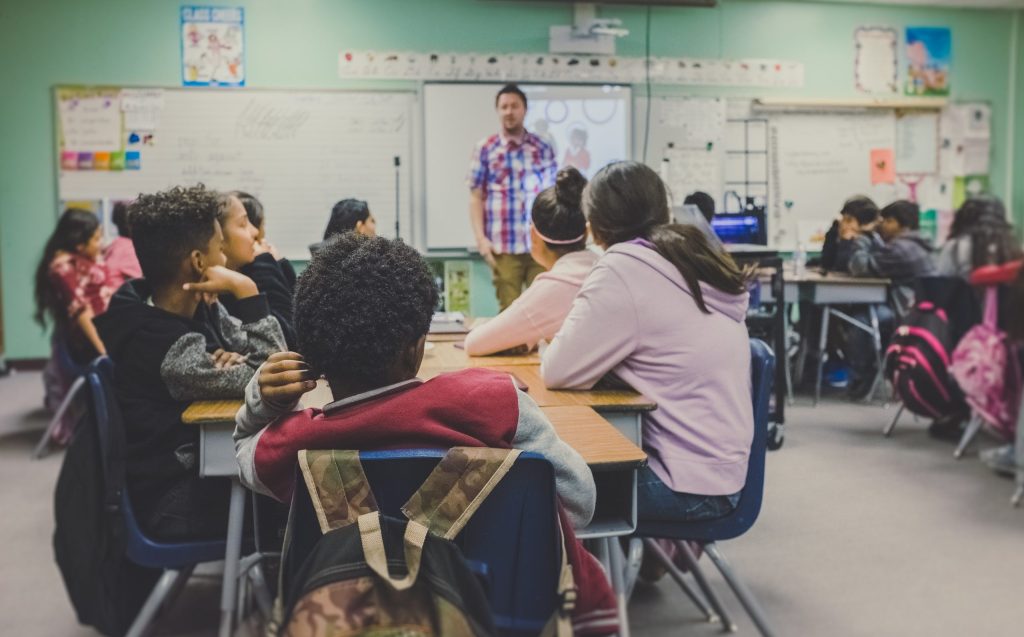Let’s get the most important question out of the way and figure out what the present tense is.
The present tense is one of the three main tenses, along with the past and future tenses, in which verbs will often appear. As the name suggests, the present tense is used to show that something is happening in the current or right now.
The present tense has four variations: present continuous, present perfect continuous, present perfect, and simple present tense. In this teaching wiki, we’ll cover each of them in detail and explain how they might be used in a sentence.
What are three examples of the present tense?
But first, let’s boost our understanding of the present tense by taking a look at a few examples alongside their past and future forms:
Past: He took a bus into town.
Present: He is taking a bus into town
Future: He will take a bus into town.
Past: She cooked dinner for her family.
Present: She is cooking dinner for her family.
Future: She will cook dinner for her family.
Past: The football team competed in the tournament.
Present: The football team is competing in the tournament.
Future: The football team will compete in the tournament.
From these examples, you should understand what a sentence written in the present tense looks like. Now without further ado, let’s look at each of the four different forms of the present tense:
What are the four types of present tense?
1) Simple Present Tense
The simple present tense is used when events happen continually over some time in the present. For example, when activities are done daily or by expressing thoughts and feelings.
Check out these examples of Simple Present Tense:
- Carl goes on holiday every year
- I feel ill
- We wake up for work at 7 am
You might like to challenge your pupils to add simple present-tense examples to this list.
Learn how to form the Simple Present Tense:
First-person singular: I dance
Second-person singular: You dance
Third-person singular: He/she/It dances (note the ‑s)
First-person plural: We dance
Second-person plural: You dance
Third-person plural: They dance
2) Present Continuous Tense
The present continuous tense describes an ongoing action that is happening right now, which is in progress or hasn’t been completed. The present continuous tense is used to write about events or actions that are happening currently.
We typically use the present continuous tense with the appropriate ‘to be’ verb and a dynamic verb. A dynamic verb shows action and/or process.
Check out these examples of Present Continuous Tense:
- It is raining.
- I am not going out after work today.
- James can’t come to the phone because he is making tea.
Learn how to form the Present Continuous Tense
First-person singular: I am
Second-person singular: You are
Third-person singular: He/She/It is
First-person plural: We are
Second-person plural: You are
Third-person plural: They are
3) Present Perfect Tense
The perfect form is a verb tense that consists of the present perfect, the past perfect, and the future perfect. We use it when talking or writing about actions completed by the present or a specific moment in the past or future. For example, the present perfect tense is used for repeated actions that began in the past but are not finished yet.
Check out these examples of Present Perfect Tense:
- I have guitar lessons every Monday.
- We have known each other since school.
- There has been an accident.
How to Form the Present Perfect Tense
First-person singular: I have
Second-person singular: You have
Third-person singular: He/She/It has
First-person plural: We have
Second-person plural: You have
Third-person plural: They have
4) Present Perfect Continuous Tense
And finally, we have the present perfect continuous. This will likely be the last of the present tenses you teach your little ones in KS2. The present continuous tense indicates that an action or condition is happening now, frequently, or may continue.
The present continuous (present progressive) tense is a way to convey any action or condition that is happening right now, frequently, and maybe ongoing.
Check out these examples of present Perfect Continuous Tense:
You can use some of our simple examples of present continuous tense to help explain how to identify and use the formula of this tense form.
- He is going to the library.
- We are coming to shopping in this market.
- You are shopping in that market.
- I am writing articles on different topics.
- He is reading various kinds of books.
- They are playing football now.
What are Present Tense words?
We’ve looked at each of the four present tense forms and read through a few examples. So, let’s briefly explore some valuable words and phrases that you or your learners can use when forming sentences in the present tense:Top of Form
| Present tense | Word Bank | Example Sentence |
| Simple present tense | Every day, month, week, year, consistently, sometimes, never, frequently | Steve runs three miles every day. |
| Continuous present tense | I am, is, are | The boys play netball after school.
We are visiting the museum in the afternoon. |
| Perfect present tense | Has, have | John has taken Sarah’s advice.
They have fixed the fence. |
| Perfect continuous present tense | Has been, have been, haven’t been | I have been watching TV for hours.
Nat has been learning ballet for seven years. |


